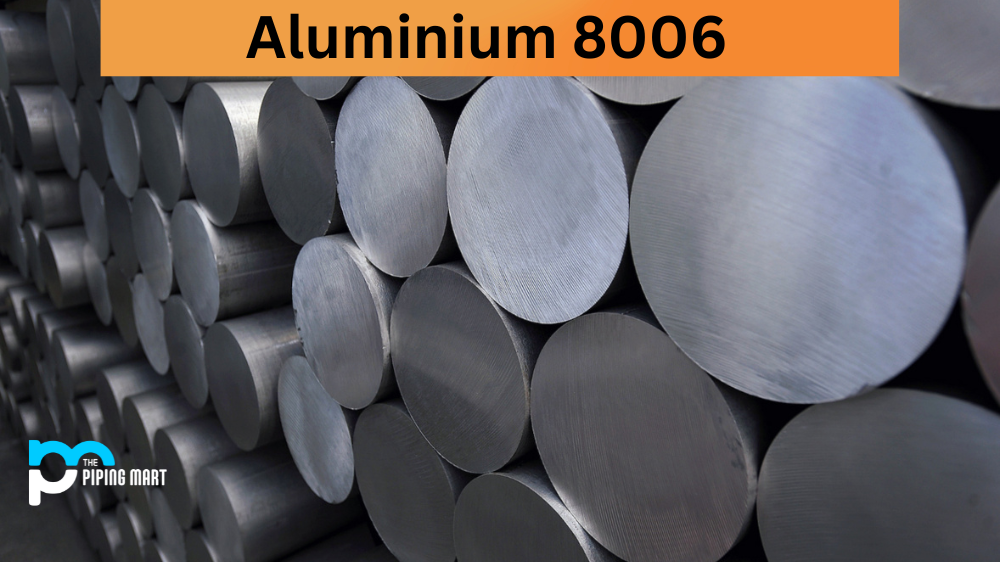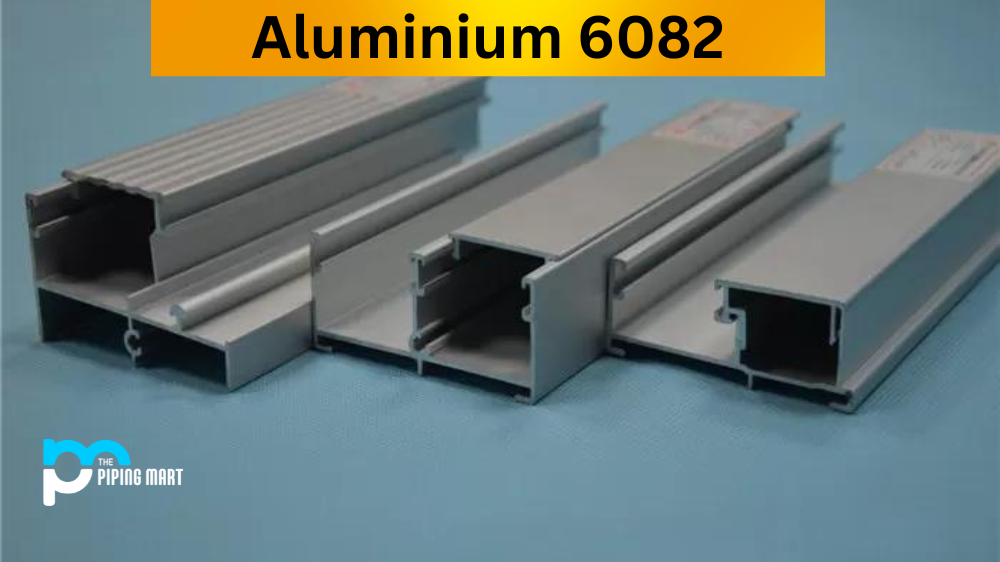Aluminium 8006 is a heat-treatable alloy with superior corrosion resistance, weldability, formability, and machinability. UNS A98006 has been used in many industries for its unique characteristics and ability to resist wear and tear. In this blog post, we will discuss the uses of 8006 Alloy and its corrosion resistance, heat resistance, heat treatment, machining, and welding properties.
8006 Alloy Composition
| Element | Content (%) |
|---|---|
| Aluminum, Al | 95.9 – 98.5 |
| Iron, Fe | 1.2 – 2 |
| Silicon, Si | ≤ 0.40 |
| Copper, Cu | ≤ 0.30 |
| Manganese, Mn | 0.30 – 1 |
| Magnesium, Mg | ≤ 0.10 |
| Zinc, Zn | ≤ 0.10 |
| Remainder (each) | ≤ 0.050 |
| Remainder (total) | ≤ 0.15 |
8006 Alloy Physical Properties
| Properties | Metric | Imperial |
|---|---|---|
| Density | 2.74 g/cm³ | 0.098 lb/in³ |
8006 Alloy Mechanical Properties
| Properties | Metric | Imperial |
|---|---|---|
| Elastic modulus | 70 MPa | 10152 psi |
8006 Alloy Thermal Properties
| Properties | Metric | Imperial |
|---|---|---|
| Thermal conductivity | 190-210 W/mK | 1317- 1456 BTU in/hr.ft².°F |
8006 Alloy Uses
Aluminium 8006 is an alloy of aluminum comprising elements such as silicon, iron, manganese and copper. It offers a range of advantages that make it one of the most versatile alloys available. Structures built from aluminium 8006 are known for their incredible strength, making it widely used in structural applications such as auto parts, marine components and bridges. Its strong yet light nature also makes aluminum 8006 an ideal choice for engine blocks and aircraft construction. In addition, its superior thermal conductivity means it is also widely used to manufacture electronic components like radiators and servers. Its versatility means that aluminium 8066 can even be found in smaller consumer items like kitchen gadgets – proving that its uses really are endless!
Corrosion Resistance
The most important feature of aluminum 8006 is its superior corrosion resistance. This alloy is resistant to most chemicals, including chlorides and sulphates, which makes it ideal for applications in marine environments or areas where there are high levels of pollution. Additionally, aluminium 8006 does not corrode easily when exposed to moisture or humid conditions. This makes it suitable for use in outdoor applications such as window frames or fencing.
Heat Resistance
Aluminium 8006 has a high melting point (around 650°C), making it resistant to high temperatures. It can be used in applications that require exposure to extreme temperatures, such as automotive parts or components that need to withstand regular heating cycles without losing strength or integrity. The alloy’s temperature stability ensures that it retains its properties even after long-term exposure to harsh conditions.
Heat Treatment
aluminum 8006 can be heat treated using either annealing or tempering processes depending on the desired outcome of the alloy’s chemical composition and mechanical properties. Annealing involves heating the material up to a specific temperature before cooling it slowly, while tempering involves reheating the material before quenching it quickly at a lower temperature than annealing requires. These processes allow engineers to tailor the material’s properties according to their needs while still maintaining excellent performance qualities, such as good ductility and strength retention, even under extreme conditions.
Machining
Machining aluminium 8006 can be performed using traditional methods such as drilling, tapping, turning, milling etc., but due to its low thermal conductivity compared with other materials like steel, tools need to be sharpened regularly during use so that they remain effective throughout the process. The alloy also has good machinability, which allows for precise manufacturing with minimal wastage of raw materials during production runs.
Welding
Welding aluminum 8006 is usually done by either MIG (Metal Inert Gas) welding or TIG (Tungsten Inert Gas) welding processes, depending on the application requirements of the finished product being manufactured. Both techniques are relatively easy to master but should only be attempted by experienced welders who understand how each technique works and what element of safety is involved in working with hot metals like aluminium alloys.
Conclusion:
Aluminium 8006 is an ideal choice for applications requiring excellent wear resistance and corrosion protection due to its superior mechanical properties combined with great formability and machinability when compared with other materials like steel or stainless steel alloys. The alloy also offers excellent weldability, making it suitable for joining components together without compromising on quality or performance characteristics over time due to exposure to extreme temperatures or corrosive elements present in many industrial environments today. This makes it one of the most popular alloys used in industries today, from aerospace engineering through automotive parts manufacturing right down to our everyday household items like window frames! So if you need an alloy that can offer superior strength along with exceptional formability, then look no further than aluminum 8006!

A passionate metal industry expert and blogger. With over 5 years of experience in the field, Palak brings a wealth of knowledge and insight to her writing. Whether discussing the latest trends in the metal industry or sharing tips, she is dedicated to helping others succeed in the metal industry.




